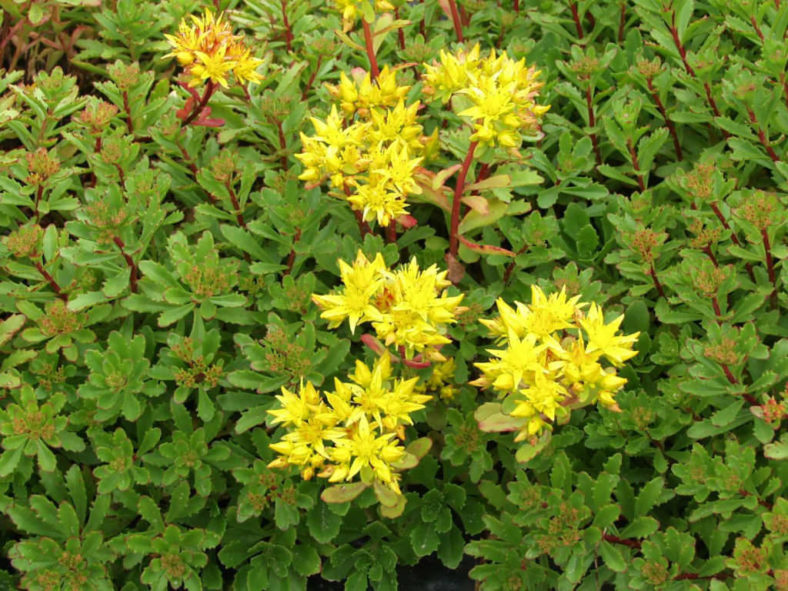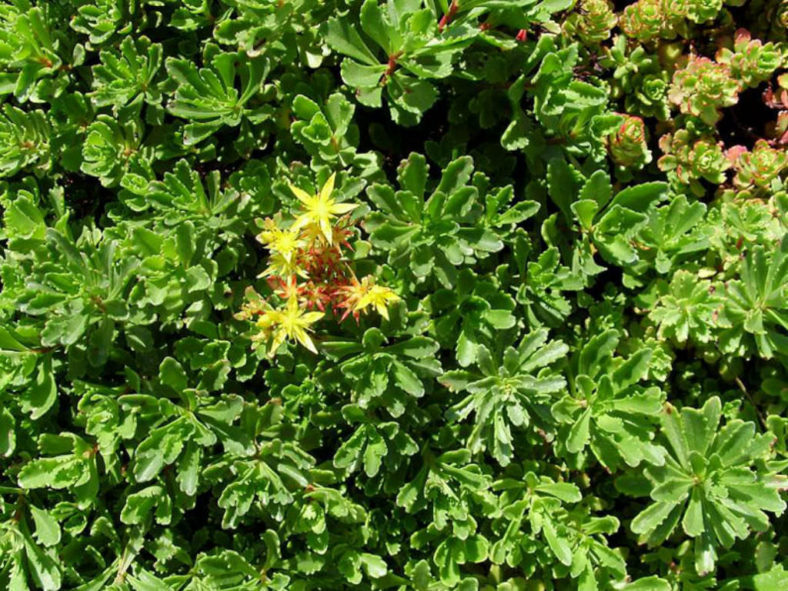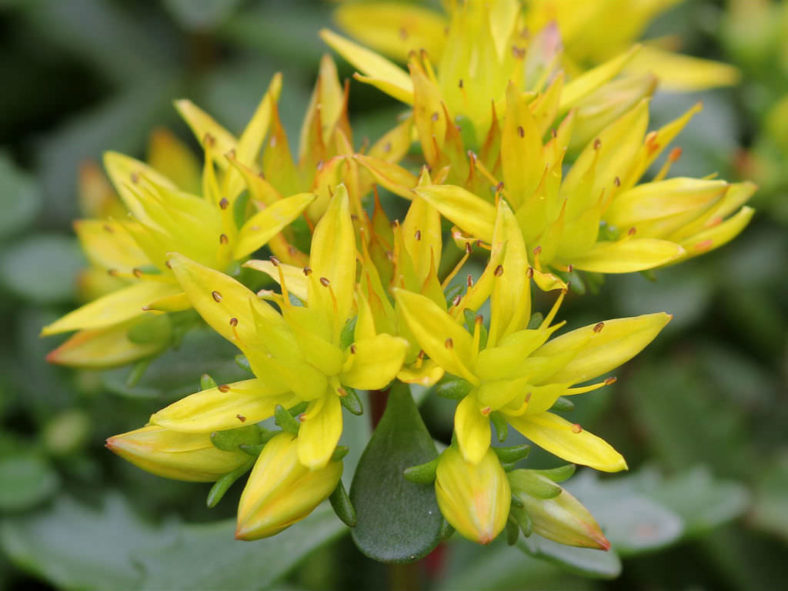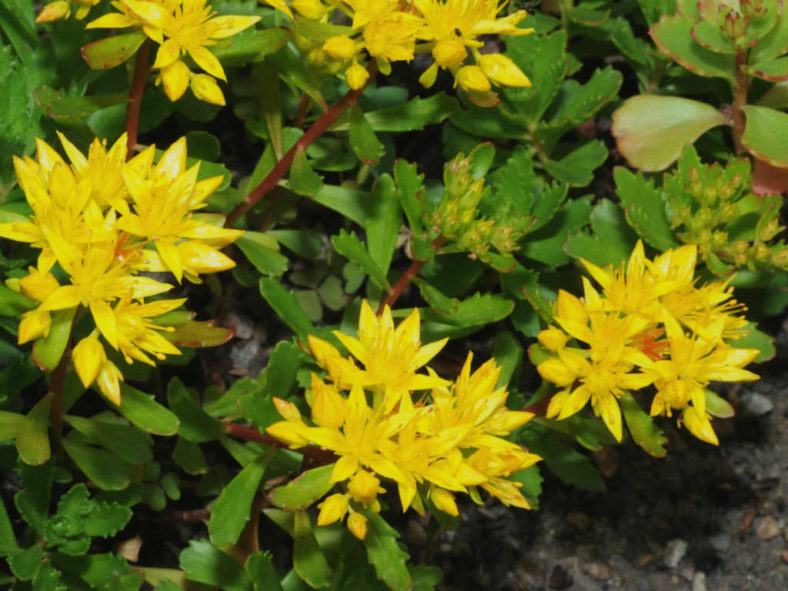Scientific Name
Phedimus kamtschaticus var. floriferum
Accepted Scientific Name(s)
Phedimus kamtschaticus (Fisch.) 't Hart
Synonym(s)
Aizopsis florifera, Sedum floriferum, Sedum kamtschaticum var. floriferum, Phedimus floriferus
Scientific Classification
Family: Crassulaceae
Subfamily: Sempervivoideae
Tribe: Umbiliceae
Genus: Phedimus
Origin
Phedimus kamtschaticus var. floriferum is native to Siberia. It is not recognized as a separate variety and is treated as a form of Phedimus kamtschaticus.
Description
Phedimus kamtschaticus var. floriferum is a fairly rapid grower with a woody rhizome and numerous spreading-ascending stems with flat, notched, dark green leaves. The stems can grow up to 4 inches (10 cm) tall.
The flowers are yellow and appear on each stem in late summer. The plant dies down in winter.
Phedimus kamtschaticus var. floriferum and its cultivar Phedimus kamtschaticus var. floriferum 'Weihenstephaner Gold' are probably the most widespread forms of the very variable Phedimus kamtschaticus.

Hardiness
USDA hardiness zones 3a to 9b: from −40 °F (−40 °C) to 30 °F (−1.1 °C).
How to Grow and Care
Phedimus thrives in conditions similar to many other plants but does just as well in less hospitable areas. These succulents have a slow to moderate growth rate, making them popular for growing as groundcovers and in containers.
These are light-loving plants. They grow best in full sun but can also thrive in light or partial shade. They also thrive in warmer environments. Plant them in an area of your garden with 6 hours of sunlight daily.
The soil does need to be well-drained. Excellent drainage is essential for preventing root rot or fungal diseases.
The best way to water these plants is to use the "soak and dry" method. First, get the soil completely wet, then wait until it is dry before watering again. Phedimus are drought-tolerant, so they will thrive even if you neglect them for a while.
Learn more at How to Grow and Care for Phedimus.
Cultivars
Links
- Back to genus Phedimus
- Succupedia: Browse succulents by Scientific Name, Common Name, Genus, Family, USDA Hardiness Zone, Origin, or cacti by Genus
Photo Gallery
Click on a photo to see a larger version.


